Climate Resilient Community-Managed Flood Mitigation Project in La Trinidad, Benguet
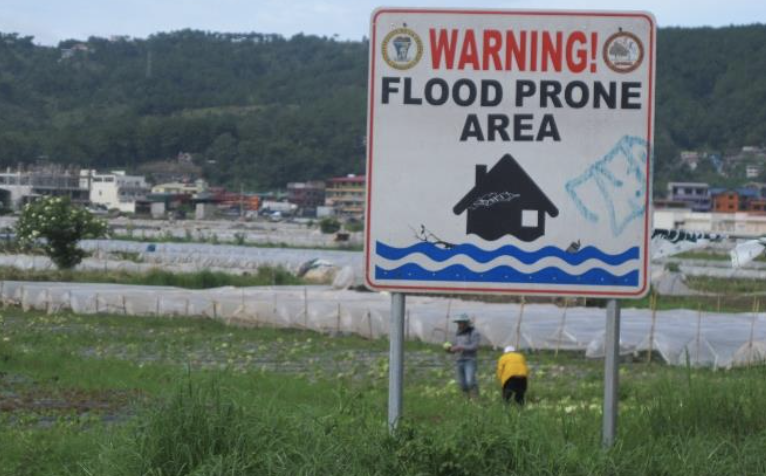
Introduction
BarangayBetag is a community located in a fertile valley surrounded by steep mountains and rolling terrain in the Municipality of La Trinidad, Benguet, Philippines. This area is well known for its “Strawberry Fields” – farmland subdivided into smaller parcels of 250-500 square meter garden plots where low-income farmers and gardeners cultivate high-value fruits and vegetables such as strawberries, lettuce, broccoli, and herbs.The production of high-value crops, primarily strawberries, is the main source of income for this community. It also generates a chain of enterprises, trade and tourism activities linked to strawberry and vegetable farming.
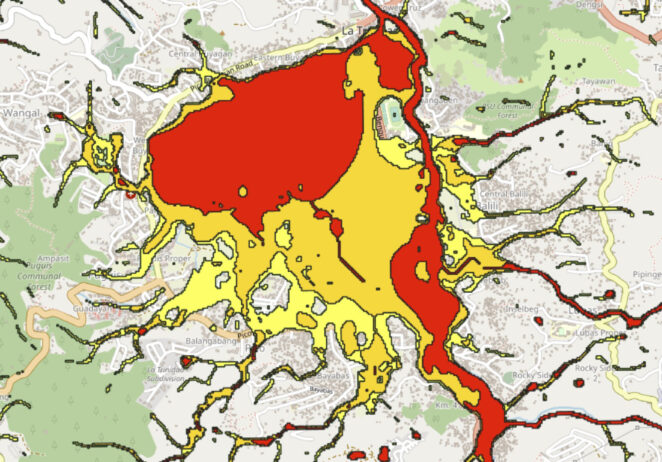
However, the strawberry fields are highly vulnerable to severe flooding. The valley floor is regularly flooded during typhoons, monsoon rains, and heavy rainfall events. Floods can be up to two meters deep and inundate the whole valley floor (see image above) for up to 12 hours before receding (see image above). This has serious negative impacts on crops as they cannot survive underwater longer than 2 to 3 hours. The regular flooding events cause serious damage and losses to the farmers and widely affect the whole municipal economy of La Trinidad.
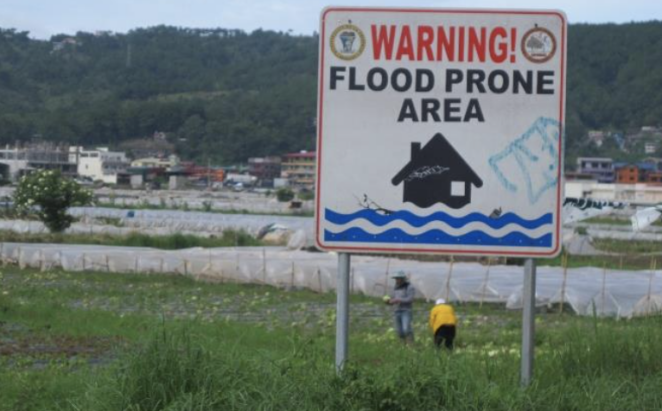
Climate change is expected to worsen the community’s flood risk. Mid-range projections from the Philippine Atmospheric, Geophysical and Astronomical Services Administration (PAGASA) indicatethat rainfallwill increase between 36% to 38% during the dry season (peak season for harvesting and selling strawberries) to 6 to 18.5% during the wet season – a period of seed replacement and flowering. This case study presents a community-ledresilience project to protect the strawberry fields fromrainfall andinundation due to climate change. This wasidentified bythe community stakeholder group as their top priority for a community-ledresilience project.
Methodology
The community-led project (CLP) places urban poor communities as activeand informedparticipantsat the centre of the process of resilience planning, from assessment to implementation,andgives them a role in the maintenance of community-led projects.Through the Community Resilience Planning (CRP) process,people from poor and vulnerable groups work together with other stakeholders from government and the private sector to collect and analyse data about how hazards impact vulnerable groups and livelihoods and design and agree resilience solutions. The Community Resilience Planning process requires strong social mobilization, communication and engagementwith all stakeholders. It also requires the creation of the Community Stakeholder Group (CSG), an institutional and multi-sectoral mechanism for transparent and effective information sharing, decision-making and implementation of community decisions and actions.
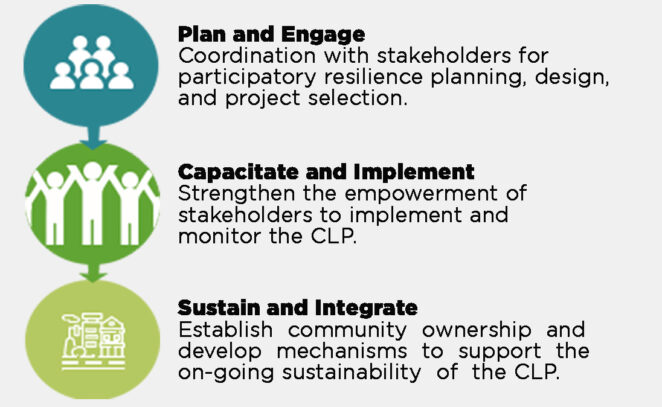
Community-Led Resilience Project
Through the CRP process, community members identified and developed a CLP called “TheBetag Climate Resilient Flood Mitigation Project” to address the perennial problem of flooding that seriously affects their livelihood. The project will improve the flood drainage system through the installation of larger reinforced box culverts. The project will considerably increase the discharge of flood water out of the strawberry and vegetable farms into Bolo Creek. The design of the drainage system is expected to be effective for 50 to 75 years and takes into account the projected increase in rainfall and flood volume levels for the next 50 years.
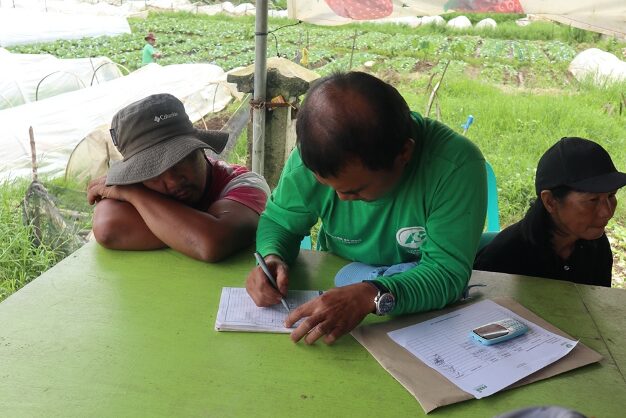
Innovations
The current standard government design of flood control projectsdo not incorporate the actual volume of rainfall, the discharge volume of floodwaters, nor future climate projections. The CLP features a drainage system which is larger than standard government designs and it takes into account the highest recorded rainfall levels, the largest floodwater volumesexperienced in the area, and the worst-case future climate change scenarios. It is also designed to withstand a greater amount of stress and pressure and expected to last for more than 50 years.The project will construct reinforced concrete box culverts in 3 key sites along the Benguet Agri-Pinoy Trading Complex (BAPTC) Road to open up drainage outflow points for the strawberry fields three main tributary areas. The local government and the Department of Public Works and Highway (DPWH) appreciate that the design providesallowances above the minimum government design standard. This provides an opportunity to test a new design and influence institutions and decision-makers to promote drainage design standards that are more climate-resilient.
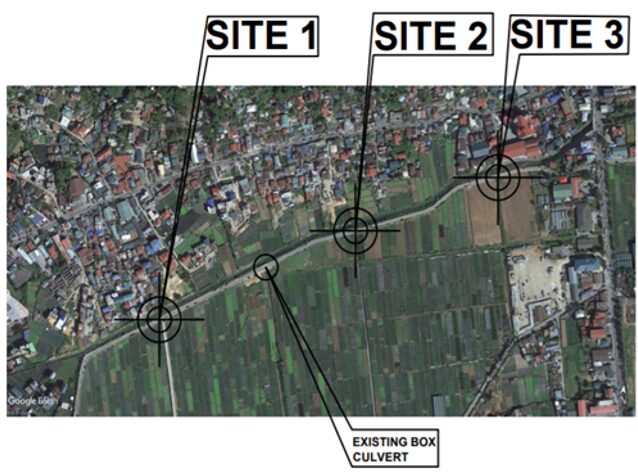
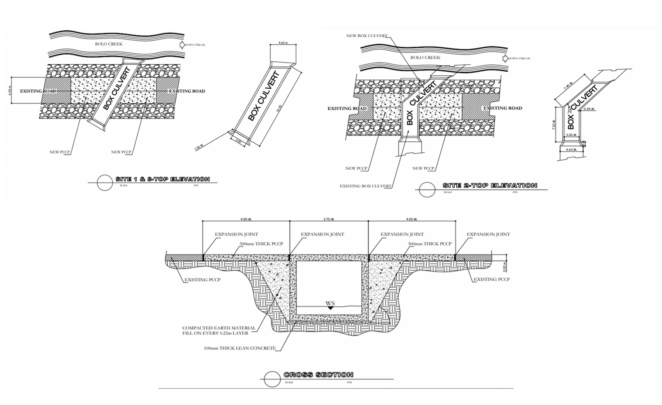
Gender and Social Inclusion
Research revealed that flooding had a major impact on the lives and livelihood of the farmers working in the strawberry plantation. Land ownership and security of tenure is an issue for all farmers in the area – both women and men–as the land is rented from the Benguet State University. The Benguet State University is therefore a member of the community stakeholder group where farmers (women and men), gardeners, local government members, senior citizens, youth, persons with disability are all included in the process of design, development and implementation of the project.
Issues and Challenges
Implementing the community-managed flood mitigation project encounteredseveral challenges including the community’s lack of technical and operational capacity to manage and maintain the flood culverts,and the need tosecure government permits and clearances for thelargerengineering design. Theproject will develop the capacity ofcommunity members to enable them toproperly operate and maintain thenewflood controlsystem, and thecity government and project partnerswillsupport the community in securing the necessary government permits and clearances for the project.
Expected Results and Impact of the Project
The construction of the reinforced concrete box culverts will significantlyreduce the impacts ofperennial floodingon the strawberry and vegetable fields of BarangayBetag. In 2018 alone, the flood damages and losses in the barangay amounted to an estimated 3.3 Million Pesos (USD 66,000) according to records from the Municipal Disaster and Risk Reduction and Management Office (MDDRMO). Without the project, these losses and damages are expected to increasedue to the anticipated increase inthefrequency and severity of flooding events in the areadue toclimate change.
Community organizations will lead the maintenance and management of the floodcontrolsystemthrough regular monitoring, cleaning and dredging of silt, debris and waste materials that can block the culvert andprevent the drainage systemfromoperatingeffectively. Farmers and farmer groups are expected to monitor and clean the culverts and drainage system on a regular/rotational basis to ensure the unimpeded flowoffloodwaters. Through this community-led project, flooding damage and losses will be reduced and this will contribute to more resilient and sustainable livelihoodsfor the community.
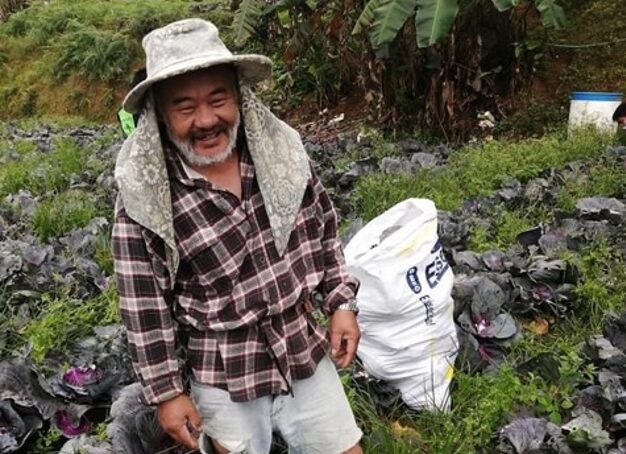
The project is still ongoing and is funded and supported by the Asian development bank through the Urban Climate Change Resilience Trust Fund (ADB-UCCRTF) and implementedby Oxfam in partnership with the Philippine Rural Reconstruction Movement (PRRM).
About UCCRTF. The Urban Climate Change Resilience Trust Fund is a $150 million multi-donor trust fund (2013-2021) administered by the Asian Development Bank under the Urban Financing Partnership Facility. With funding from the Rockefeller Foundation and the Governments of Switzerland and the United Kingdom, it aims to support fast-growing cities in Asia to reduce the risks poor and vulnerable people face from floods, storms or droughts, by helping to better plan and design infrastructure to invest against these impacts.
ADB-RETA 9329. Oxfam and local partner Philippine Rural Reconstruction Movement is implementing ADB-RETA 9329 Promoting Urban Climate Change Resilience in Selected Asian Cities Subproject 3 (SP3): Pilot and Project Development Activities. The goal of the project is to contribute to climate change resilience by empowering vulnerable communities through community-led initiatives. The project is implemented in 9 pilot communities in Bangladesh, Pakistan, Philippines and Myanmar.
Contact details
Dr. Virinder Sharma
Senior Urban Development Specialist
Asian Development Bank
Sharon Taylor
Project Manager (Philippines)
Philippine Rural Reconstruction Movement
Jose Arianne Gonzales
Communications and Knowledge Management Specialist
Oxfam Great Britain
[email protected]
Citation
Jeans, H., Deocariza, M., Gonzalez, J.A., Taylor, S. and Manegdeg, N.(2021) Climate Resilient Community-Managed Flood Mitigation Project in La Trinidad, Benguet. On weADAPT, the Collaborative Platform on Climate Change Adaptation.
Further readings
Related resources
- Building urban community resilience in the Philippines
- Proud of my Purok: Reducing floods and land slides in the Agusan Delta, Philippines
- Mainstreaming Climate Change Adaptation in Watershed Management and Upland Farming in the Philippines (ACCCA)
- The impacts of flooding on well-being and the role of ecosystem-based adaptation
- Climate Risk Management to Secure Business Operation of Chicken Farming and Improve Livelihoods
- Siargao Urban Resilient Future (Del Carmen SURF) Project
- Community-Managed Water Supply System and Rainwater Harvesting Facility
- Building Resilience to Floods and Rain-Induced Landslides in Barangay Napaan
(0) Comments
There is no content